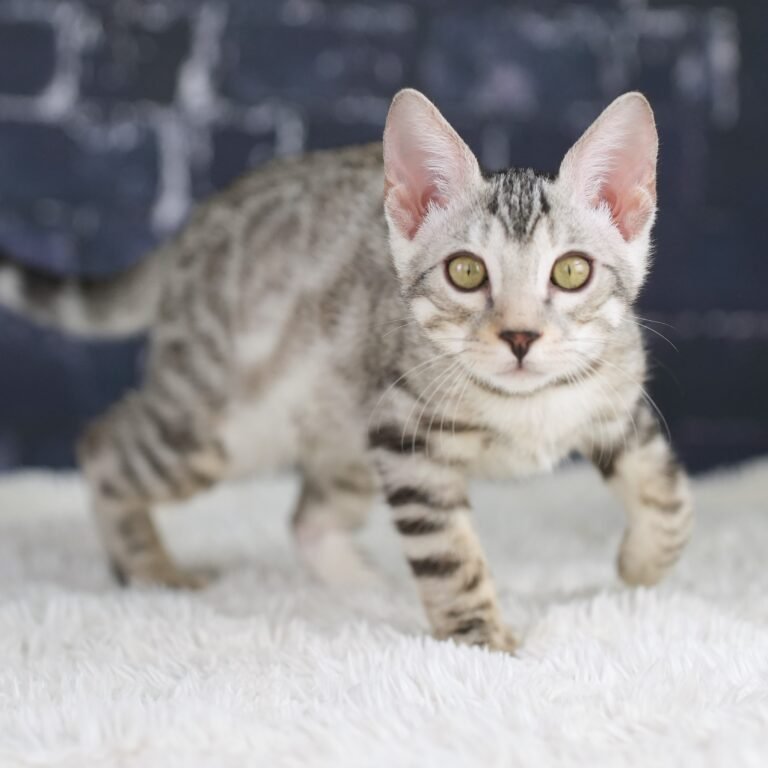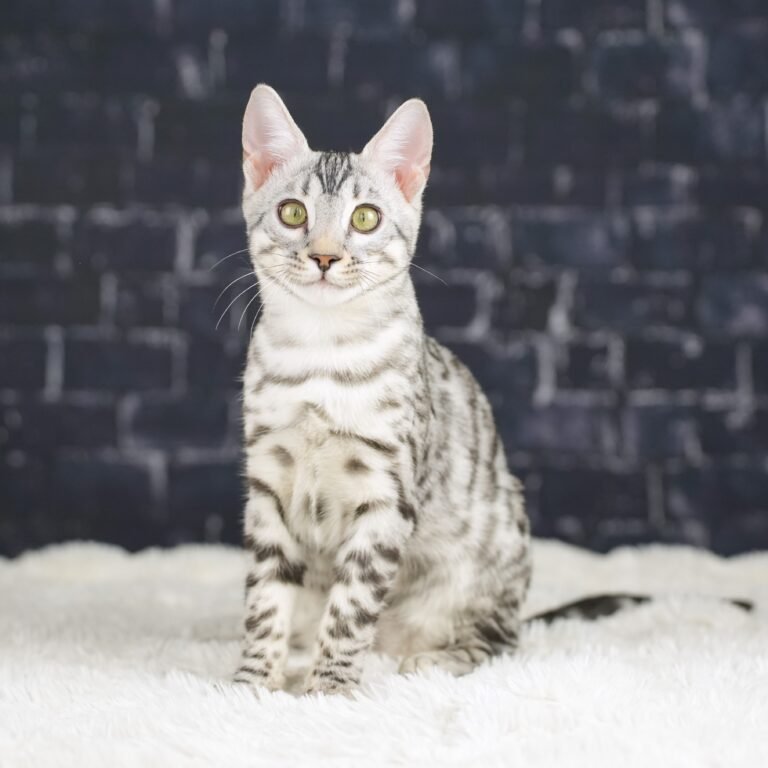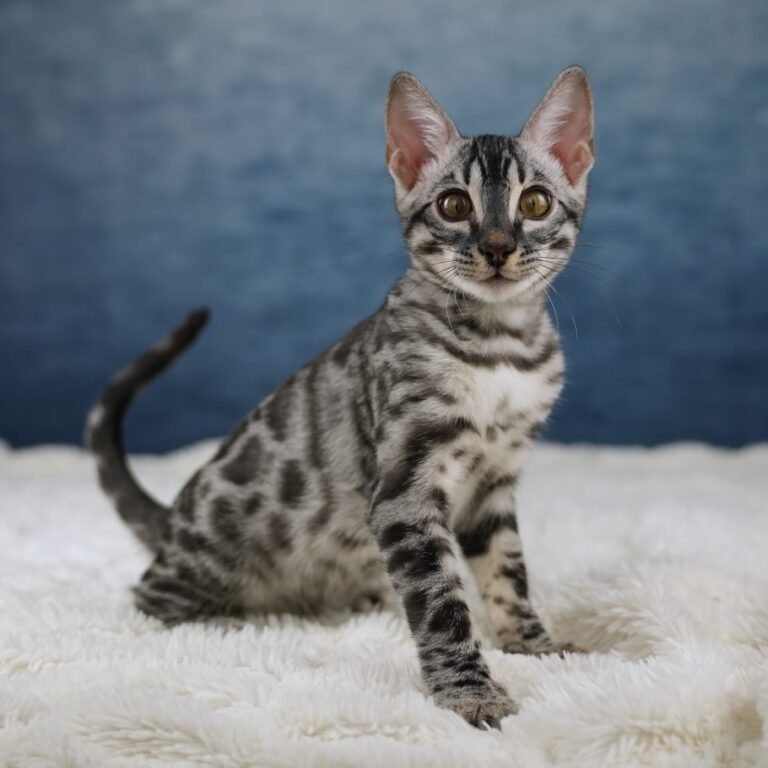Silver Bengal Cats
Silver Bengal cats are mesmerizing – a sleek, shimmering feline that seems to glow from within, as if illuminated by an inner light. With their striking metallic coat, these felines boast a silvery-white background adorned with bold, often black or dark gray, markings. This dramatic contrast creates a visual spectacle across their muscular frame. Interestingly, the “Silver” effect isn’t a true color, but rather the result of color suppression. This means it can be combined with other coat effects, patterns, and colors. On brown Bengals, it produces the classic “silver” appearance; on red Bengals, it yields a softer “cameo” hue; on melanistic or solid Bengals, it manifests as a mysterious “smoke” effect; and on snow Bengals, it results in a striking icy-silver coloration.
- Silver
- Charcoal Silver Seal Lynx
- Silver Seal Sepia
- Smoke (not recognized by TICA as of 2024)
- Silver Blue (not recognized by TICA as of 2024)
- Cameo (not recognized by TICA or CFA as of 2024)
History of the Silver Bengal Cats
The first silver bengal:
TICA and CFA Acceptance:
Silver Bengal Cat Genetics:
The Challenges of Breeding Silver Bengals:
Breeding silver Bengals come with unique challenges. One of the main issues breeders face is “tarnish” – unwanted warm tones that can appear in a silver cat’s coat. This tarnishing effect can vary in intensity and may even seem to come and go throughout a cat’s life. Tarnish is more likely to occur in cats that have one silver parent and one non-silver parent. To combat this, many breeders choose to breed silver to silver, aiming for cats that are homozygous (I/I) for the inhibitor (I) allele.






